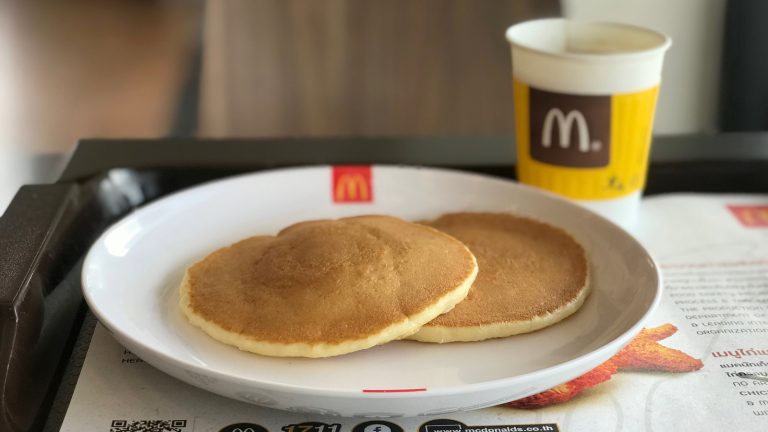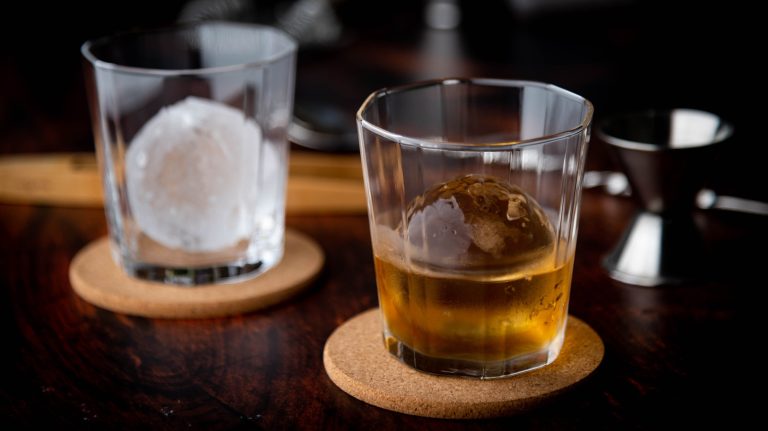Celebrity chef Anne Burrell is no stranger to the public eye. She first appeared on the Food Network in 2008, when her hit show “Secrets of a Restaurant Chef” premiered. Since then, she has become a mainstay on the network, appearing on countless programs as a host, mentor, and competitor, including “Chef Wanted,” “Worst Cooks in America,” “Beat Bobby Flay,” and “Iron Chef America.” Her latest venture on the Food Network’s “House of Knives” finds her in familiar territory, competing against an elite panel of contestants.
Burrell’s unique background and experience as a culinary instructor, chef, and cookbook author have made her a powerhouse in the kitchen. Anne Burrell’s secrets to success are less about gimmicks and over-the-top creations and more about leaning into solid technique, quality ingredients, and a rustic approach that is rooted in her belief that the best cooks learn from failure and live on the edge of disaster. Recently, Tasting Table got the unique opportunity to catch up with Burrell for an exclusive interview, where she elaborated on her experience, secrets to success, and some of the ways home cooks can become more confident in the kitchen.
The key to using heat is to focus on flavor
You mentioned during a spice-themed challenge that you aren’t super fond of spicy food. If you’re someone who is spice-averse, what are your favorite ingredients to lean on to achieve flavor without aggressive heat?
Okay, so I’m just going to make a tiny correction here. I am not spice adverse, I am a wimp when it comes to spice. My feeling on spice is that it’s a great addition to a dish and there’s different kinds of spice. There’s spice that when you have in your mouth, it just packs a whammy and it’s just spicy. And then there’s spice that has real flavor to it with a lot of Asian chili paste and stuff like that, so it depends on what you’re looking for in a dish.
I, myself, like a little spicy poke in lots of stuff, but I like it where it’s kind of a secret. You’re a couple bites in and then all of a sudden you’re kind of getting this slow burn, where it adds to the experience of the dish. It’s not the entire experience of the dish.
So, whenever I’m starting a pan to sweat onions or something like that, I always add a little pinch of crushed red pepper in there. It’s a little excitement, but it doesn’t take over the whole dish. Right? I mean I like spicy with flavor, not just spice for the sake of spice … Like, “Hi, I’m here.” I like to call it the slow burn. Yeah, I think it’s a little sexier.
Never throw anything away and don’t be afraid to push ingredients to the edge
During the “House of Knives” shrimp-themed challenge, you opted to fry the shrimp heads of the spot prawns. Why is that something that a chef should do, and what tips or tricks do you recommend for doing it?
Well, it’s something that I feel like happens in Spain a lot when you get grilled shrimp … a lot of times they come with the shrimp heads. You can send them back to the kitchen and they’ll fry them for you and return them for you, and I think that’s just so cool, because then it’s like all the delicious, really intense prawn flavors in a crispy crunchy. It’s almost like a shrimp potato chip … it’s also something, when in a competition or when I’m cooking somewhere where there is a deep fryer already set up, I like to do, because I think it’s kind of sexy and it makes for a great presentation.
What are some other ingredients that most home cooks would typically discard that you frequently would use to introduce layers to a dish? Carrot tops, potato peels? How would you incorporate those?
Whenever I do a roasted chicken, I always save my chicken carcasses. I just keep a ziplock bag of them in my freezer and then when I have a bunch of them, I make chicken stock with them and always the wing tips and stuff … Any parts from the chicken bone, the necks, all of that kind of stuff, I save for chicken stock … A lot of times when you do a roasted chicken or something like that and you want to make a gravy or something with it, you roast your chicken on a bed of veggies or something like that and then you use that to flavor the gravy, but then you strain them out and discard them.
I have started doing what I like to call … chunky gravy. Instead of cutting the mirepoix that I would normally roast the chicken on in big chunks, I cut them into a quarter inch dice, and I toss them with a little rosemary olive oil and a little crushed red pepper and salt. Then roast them for about half an hour before I put my chicken in. I roast the chicken on that and then when I’m letting the chicken rest, I just leave all the veggies in the gravy. A lot of times all those veggies would just get discarded … So I put my roasting down right on the burner, I put a little flour in it and start to cook it like that, and then whisk in chicken stock and it’s delicious chunky gravy.
It seems to me like a homey, rustic kind of thing. It’s one of my giant pet peeves when people conflate the word rustic with the word sloppy. Yeah, to me rustic cooking is where you take things almost to the edge of disaster and then yank them back. It’s the most flavorful. It’s like what I call the “burnt toast” phase. It’s the most flavorful step before it’s trash. I like to live on the edge and take things to the burnt toast phase and then yank it back.
Her secret to success when competing is organization and focus on details
You’ve been in more than 200 culinary battles over your career. Is there a strategy that you employ when competing on a cooking competition? How do you strike a balance between risk taking and leaning into what you know do best?
Well A, I can’t believe I’ve done more than 200 battles. That is crazy to me. So whenever I’m competing, whenever I hear what the challenge is, I go with the first thing that comes into my head because I feel like if I second guess myself, then I lose my way and then I sort of get confused. I always am like, “No, go with the first thing that comes to your mind.”
Then my other big strategies are go and do a big get. Get as much as you can think of that you need from the kitchen and ingredients and equipment and all that kind of stuff, because running back and forth to the kitchen just eats up time.
I always make sure I taste my food. I feel like from judging so many competitions, even experienced chefs, it’s such a whirlwind sort of thing, and you’re just trying to do so many things all at the same time. A lot of times, a step that gets missed is tasting your food. My last thing is that with five minutes left, I need to be plating, because you see people don’t take into consideration how long it takes to plate. When you’re rushing to get things on the plate, that’s when plates can look sloppy, or garnishes and little style point things can get missed … And I will say, I’ve definitely done that myself. It’s the most annoying thing ever, because it could be some delicate little garnish or some cute little clever thing that you’ve spent time working on it, and then when it doesn’t make it on the plate, it’s just like, “Oh, crap.” Right? Because details matter.
Are there any favorite tricks that you use when it comes to beating out the competition?
The other thing is, what happens if you finish with a little time to spare? Stop! I’m also like, “Oh, let me just add this one last little thing.” And that is the kiss of death. You know what I mean? I’ve seen so many people just take it too far, like why did you put this on there? So, I just take my time, I check the plates, I make sure that I wiped the ribs of the plates or something like that and just do little tweaks.
Keep things seasonal
If you could select a dream list of ingredients for preparing a dish, what would they be and why?
I was sort of thinking about this, and how there is such little seasonality to food anymore. I was thinking about things that are just truly some of the last seasonal things that we have, and one is definitely ramps. Ramps are so amazing and then I was thinking about the little spot prawns. Spot prawns are not in season all the time, and neither are] bay scallops. If you ever had bay scallops, they’re only in season for a little while.
Sorrento lemons, you can kind of get them all year, but I just saw them the other day in my Italian grocery store near my house and I was like, “Oh, Sorrento lemons. What can I do with those?” Just spring things. I love cooking in the spring because everything is so delicate and new and green and it takes a very delicate hand and I really just love that.
Cooking well doesn’t require fancy cooking utensils
What are your favorite cooking utensils?
Oh, well, I am all about what I like to call the low-tech solution. I love a wooden spoon, and I love a wooden spoon that looks like it’s got some miles on it. To me, it doesn’t matter if you’re a grandma or if you’re a three-star Michelin chef, everyone uses a wooden spoon and in the same way. I find that just this sort of homey and delightful.
I love a fish spatula. It’s so useful for a ton of different things. A food processor is probably as high-tech as I go, and let’s see, hang on, let me just look at my kitchen for a second because I know I’m missing something … Oh, a microplane! I definitely love a microplane and let’s see, a heatproof rubber spatula.
Low-tech solutions, but things that are about what you as a cook do with them … It’s like when my nieces and stuff were going to college or wanted to just set up her first apartment, and I’m like, “All right, what kitchen stuff do you need?” I just sent a whole bunch of stuff like that: wooden spoons, fish pads, rubber cutting boards that don’t slip, measuring spoons, measuring cups, liquid and dry. All of the basics that you don’t think of until you need them.
Don’t take yourself too seriously in the kitchen
You’re funny, you have a really quick wit and it shows up frequently, including on “House of Knives.” To me, that seemed like a natural fit for you, but I was curious how your sense of humor plays into your culinary style?
Well, I again, I am about the low tech solution, but I truly in my heart feel that your food knows how you’re feeling when you cook it and it reacts accordingly. I like to put happy and joy into my food, and it’s not so serious. I teach the worst cooks in the world. I mean, you got to know how to do that. So, to me, I want to express to people, “Take the fear factor out of it and put the fun factor in.”
It’s just dinner. The thing is, when you’re cooking in a competition, and one of the worst cooks or something, people get bunched up by making mistakes and things; they don’t want to get sent home. But, you actually learn more from your mistakes than you do by just sailing through something perfectly. You learn A, what went wrong, B, how to prevent it, and or C, how to fix it.
I was looking at your Instagram feed and I noticed that you started taking improv for actors in Second City, and I am curious, what prompted you to do that?
I will say it is an absolute blast. I don’t know, I was just thinking like, “All right, what else?” I came across it, I don’t know if it was Instagram or my newsfeed or something and I was like, “There’s a Second City in New York? I didn’t realize that.”
I emailed them and got some information about the classes and I was just thinking what I do in my career is improv. There’s very little that I do that is scripted. So, I was thinking, I bet you I could probably be good at this, and it just branches me out. Who knows where this is going to take you.
I showed up on the first day and [was] by far and away the oldest person in my class and the only one without a theater degree. And I’m like, “Oh, well, whatever.” You go for three hours a week and it’s playing games and then you talk about them afterwards, why we play them, and it’s so fun. How you think about handling things — it’s not a place to be self-conscious.
Her best piece of advice is to understand the basics
If you could give young chefs and home cooks one piece of advice, what would it be?
All right, this is going to sound like the not-cool-aunt, this is going to sound like the mom, but when making something that you’ve never made before or are interested in making: find a recipe for it. Don’t just try to wing it. Find a recipe, read several recipes and pick out the one that you feel most comfortable with or the one that you like the best, and then read it from beginning to end before you start cooking.
Two, do your mise en place. Do all your prep work before you start cooking and then clean as you go. It removes the freak-out factor from cooking when everything is ready, and you can just be calm and you don’t have a pile of dishes in the sink and that kind of stuff. And then also taste your food.
The last one seems like the most important. Taste your food, make sure you know what you’re feeding people.
Because people don’t understand the function of salt and what it does, people are just like, “Oh, salt and pepper.” But they’re not understanding when they’re tasting their food, what they’re actually tasting for. The purpose of salt is to turn the volume up on the flavor that is already there. It doesn’t add more flavors, it just makes the ones that are there taste more. So, taste your food and season it. I’m not saying go bananas, but taste your food and season it a little bit more, and then taste it again and notice the difference in flavor.
The neighborhood place to eat in Brooklyn
If I’m not mistaken, you live in Brooklyn?
I do live in Brooklyn, yes.
Do you have any favorite places to eat out in Brooklyn? Maybe a favorite pizza place that you love?
Well, we have a few neighborhood spots around here, but there’s a cute little place just up on Court Street called Luana’s, and it’s a neighborhood joint. Friday nights they have live music and it’s really a lovely little place. My husband and I go there on date nights sometimes.
We just walk up the street and it’s nice, easy-breezy, and it’s owned by a young family that has roots in this Carroll Garden neighborhood. It makes me really happy to see them doing well and the neighborhood supporting them … and to see them not only blossoming, but thriving. It just really is a great fit, because it’s a very sort of neighborhood-y kind of neighborhood.
Catch chef Anne Burrell on Food Network’s “House of Knives.” New episodes premiere Tuesday nights at 9 p.m. Eastern.





